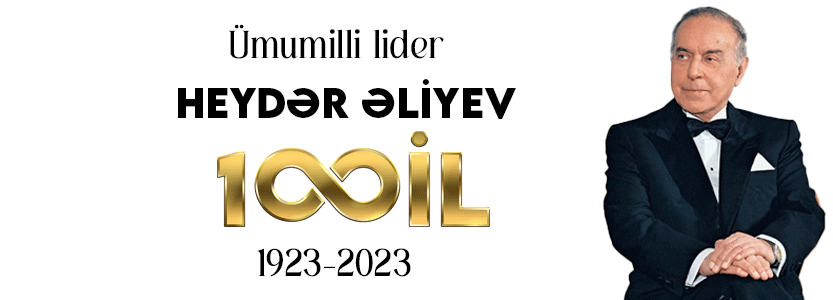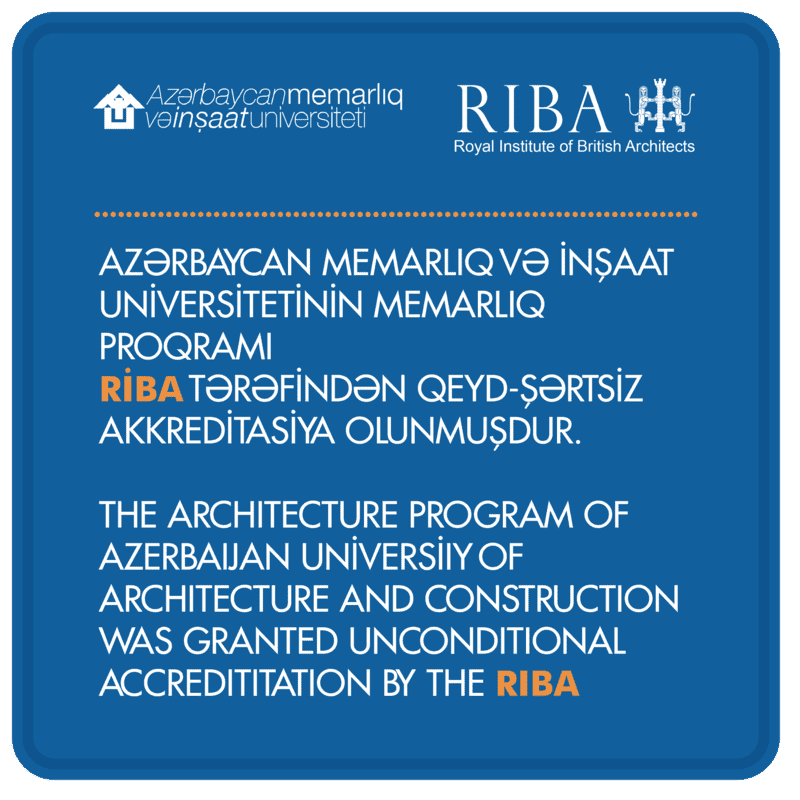Scientific Council of University
Statute
This statute was prepared in accordance with the Regulation on the Scientific Council of the University (hereinafter referred to as the Scientific Council), the Law of the Republic of Azerbaijan on Education, the Model Charter of the University approved by the decision of the Cabinet of Ministers of the Republic of Azerbaijan dated January 21, 2011 No. 9, approved by order No. 792 of October 10, 1997, and other legislative acts.
1. General provisions
-
The Scientific Council is the highest governing body of the university. The general management of the university is carried out by the Scientific Council.
-
The composition of the Scientific Council is formed from those who are included in the composition of the council according to their positions in the university and from the members elected through elections.
-
According to their positions, the Scientific Council includes the rector (chair), the vice-rector for educational affairs (deputy chair), other vice-rectors, the scientific secretary of the university, deans, the director of the College of Construction under the university, the heads of the main departments and centers, the chairs of the Committees of the Free Trade Union (employees and students), the Student-Scientific Society and the Student Youth Organization.
-
The number of elected members of the Scientific Council is determined by the rector, up to 3-10% of the total number of professors-teachers of the university. The number of elected members is divided proportionally depending on the number of professors-teachers of the faculties and is elected by secret voting at the general meeting.
-
Up to 10% of the composition of the Scientific Council can be appointed by the rector of the university in addition to the total number and are included in the composition of the Scientific Council as additional members.
-
The meeting is considered authorized when 2/3 of the total number of members of the scientific council are present.
-
The Scientific Council is created according to the instructions of the Ministry of Education of the Republic of Azerbaijan, to which the university is subordinate, and after its approval of the selected composition, it is considered an authorized body.
-
The Scientific Council works according to the work plan designed for the academic year and each semester. The work plan of the Scientific Council is discussed and accepted at the meeting and approved by the rector.
-
Decisions of the Scientific Council on all issues of teaching, scientific and educational work are adopted by simple majority vote in open voting, and during the selection of professors and teaching staff, professor, associate professor (secret) and honorary titles, they are adopted by (open) voting in the established manner.
-
The participation of at least 2/3 of the members of the Scientific Council is necessary for making a decision. If more than 50% of the total number of participants in the Scientific Council vote in favor of the discussed issue, the decision is considered to have been adopted.
-
Decisions of the Scientific Council enter into force only after approval by the rector of the university.
-
Meetings of the Scientific Council are recorded, signed by the chair and secretary of the Scientific Council and kept in the scientific secretary.
-
The chair of the Scientific Council organizes a regular review of the implementation of the Council's decisions, and the chair of the established commission provides information on the implementation of the adopted decisions to the Scientific Council.
-
If there are valid reasons - the decision of the Scientific Council can be canceled by the Ministry of Education if it is determined that the decision taken by the Scientific Council is not objective and contrary to the law.
-
The Scientific Council of the University considers the following issues:
-
Adopts the Charter and statutes of the University, as well as the statutes of faculties, departments and other structural units, makes additions and changes to them, approves the internal disciplinary rules of students, teachers, employees, doctoral students and students;
-
Discusses and approves the educational plans for the specializations in which specialist training is carried out at the university;
-
Approves the strategic development program of the University;
-
The rector's report on the university's activities is heard every year;
-
Issues related to the training of experts, scientific and pedagogical personnel, increasing and re-training of their qualifications are considered, and all issues related to training and scientific-research work are resolved;
-
Among the members of the Scientific Council, commissions on education and science, socio-economic, economic activities and control over the implementation of the decisions of the Scientific Council are created. Their reports are heard and appropriate decisions are made;
-
Resolves issues related to creation, cancellation, reorganization of faculties, departments and other structural divisions;
-
From time to time, reports on the teaching, research and educational work of the faculties are heard;
-
2. Duties and rights of members of the Scientific Council:
2.1. To regularly participate in the meetings of the Scientific Council and strictly follow the regulations;
2.2. To make suggestions regarding issues included in the agenda of the meeting of the Scientific Council and the annual work plan;
2.3. Make reports and speeches on the discussed issues, make suggestions;
2.4. To participate in the secret and open votes held at the meetings of the Scientific Council;
2.5. To be elected as a member of the commissions created within the Scientific Council and to participate in their work;
2.6. To raise a petition regarding the early dismissal and reorganization of the composition of the Scientific Council, as well as holding its extraordinary meeting.
The scientific council is the higher governing body of the university and operates under the chairmanship of the rector of the university, professor G.H. Mammadova. The composition of the scientific council is formed from those who are part of the Council and elected members based on their positions in the university. According to their positions, the composition of the Scientific Council includes the rector (the chairman), the vice-rector for educational affairs (deputy chairman), other vice-rectors, scientific secretary of the university, deans, the director of the Construction College under the university, the heads of the main departments and centers, the chairmen of Free Trade Union Committees (collaborators and students), Student Scientific Society and Student Youth Organization. Other members of the Scientific Council represent the university’s professors and teachers and are made up of a certain number of members added by the rector through secret voting.
The Scientific Council works according to the activity plan designed and approved for the academic year and each semester. The work plan of the Scientific Council is discussed and accepted at the meeting. The Scientific Council discusses and approves the University’s Charter and the statutes of all structural units, and makes certain additions and changes if necessary. Decisions of the Scientific Council are made by open voting with a simple majority, and the appointment of scientific titles of professors and associate professors is made by a secret voting in the established manner. Commissions on Education and Science, Socio-economic and Facilities Administration Activities and control over the implementation of decisions of the Scientific Council operate under the Scientific Council. The scientific council adopts the university’s strategic development plan, monitors its implementation and all aspects of activity, discusses the results of inspections of existing commissions, reports of heads of bodies and other issues. At the beginning of each year, the Rector’s one-year activity report is heard and the university’s one-year activity plan is determined.
Fakültə haqqında. Memarlıq fakültəsi öz köklü ənənələrinə görə universitetimizdə və memarlıq ixtisasını tədris edən digər ali məktəblər arasında həmişə seçilmişdir. Fakültə Memarlıq və dizayn ixtisasları üzrə bakalavr və magistr təhsili pilləsində mütəxəssislər hazırlayır. Fakültənin professor-müəllim heyətinin böyük əksəriyyəti memarlıq layihələndirilməsi- şəhərsalma, dizayn, abidələrin bərpası sahəsində respublikanın tanınmış mütəxəssisləri və alimləridir. Hal - hazırda fakültədə AMEA-nın 1 müxbir üzvü, 12 memarlıq doktoru, 17 professor, 33 memarlıq üzrə fəlsəfə doktoru, dosent öz dərin nəzəri və praktik biliklərini tələbələrimizlə paylaşır. Onlardan 2 nəfəri «Şöhrət» ordeni laureatı, 12 nəfəri respublikanın əməkdar memarı, 1 nəfəri isə Respublika Dövlət mükafatı laureatı fəxri adlarına layiq görülmüşdür.
Fakültənin 21 professor, 33 memarlıq üzrə fəlsəfə doktoru, dosent, baş müəllim və müəllim olmaqla 122 üzvü vardır.
Fakültədə təhsil. Fakültəyə daxil olmaq istəyən abituriyentlər qabiliyyət seçimindən sonra Tələbə Qəbulu üzrə Dövlət Komissiyasının keçirdiyi qəbul (test) imtahanlarında iştirak edir və universitetdə rəsm və rəsmxətdən qabiliyyət imtahanı verirlər.
Yaranma tarixi. Memarlıq fakültəsinin 90 ildən artıq yaşı vardır.
İlkin olaraq indiki Neft Akademiyasının nəzdindəki İnşaat fakültəsinin tərkibində Memarlıq bölməsi kimi mövcud olmuşdur. 1968-ci ildə inşaat fakültəsindən memarlıq bölməsinin ayrılması nəticəsində memarlıq fakültəsi yaradılmışdır. Memarlıq fakültəsində 2 istiqamətdə memarlıq və dizayn sahəsi üzrə tədris olunan fənlərin elmi-təcrübi fəaliyyətinin əsas məqsədi layihələndirmə prosesinin mənimsənilməsinə yönəldilmişdir. Fakültənin bakalaviatura, magistratura və doktorantura bölməsində hər bir istiqamətdə olan ixtisaslar üzrə kadr hazırlığı aparılır. Fakültəni bitirən mütəxəssislər memarlıq, şəhərsalma, ətraf mühitin dizaynı, tarixi abidələrin bərpası, dizayn və s. sahələrdə səmərəli fəaliyyət göstərirlər.
Fakültə haqqında. Memarlıq fakültəsi öz köklü ənənələrinə görə universitetimizdə və memarlıq ixtisasını tədris edən digər ali məktəblər arasında həmişə seçilmişdir. Fakültə Memarlıq və dizayn ixtisasları üzrə bakalavr və magistr təhsili pilləsində mütəxəssislər hazırlayır. Fakültənin professor-müəllim heyətinin böyük əksəriyyəti memarlıq layihələndirilməsi- şəhərsalma, dizayn, abidələrin bərpası sahəsində respublikanın tanınmış mütəxəssisləri və alimləridir. Hal - hazırda fakültədə AMEA-nın 1 müxbir üzvü, 12 memarlıq doktoru, 17 professor, 33 memarlıq üzrə fəlsəfə doktoru, dosent öz dərin nəzəri və praktik biliklərini tələbələrimizlə paylaşır. Onlardan 2 nəfəri «Şöhrət» ordeni laureatı, 12 nəfəri respublikanın əməkdar memarı, 1 nəfəri isə Respublika Dövlət mükafatı laureatı fəxri adlarına layiq görülmüşdür.
Yaranma tarixi. Memarlıq fakültəsinin 90 ildən artıq yaşı vardır.
İlkin olaraq indiki Neft Akademiyasının nəzdindəki İnşaat fakültəsinin tərkibində Memarlıq bölməsi kimi mövcud olmuşdur. 1968-ci ildə inşaat fakültəsindən memarlıq bölməsinin ayrılması nəticəsində memarlıq fakültəsi yaradılmışdır. Memarlıq fakültəsində 2 istiqamətdə memarlıq və dizayn sahəsi üzrə tədris olunan fənlərin elmi-təcrübi fəaliyyətinin əsas məqsədi layihələndirmə prosesinin mənimsənilməsinə yönəldilmişdir. Fakültənin bakalaviatura, magistratura və doktorantura bölməsində hər bir istiqamətdə olan ixtisaslar üzrə kadr hazırlığı aparılır. Fakültəni bitirən mütəxəssislər memarlıq, şəhərsalma, ətraf mühitin dizaynı, tarixi abidələrin bərpası, dizayn və s. sahələrdə səmərəli fəaliyyət göstərirlər.
Fakültədə təhsil. Fakültəyə daxil olmaq istəyən abituriyentlər qabiliyyət seçimindən sonra Tələbə Qəbulu üzrə Dövlət Komissiyasının keçirdiyi qəbul (test) imtahanlarında iştirak edir və universitetdə rəsm və rəsmxətdən qabiliyyət imtahanı verirlər.





